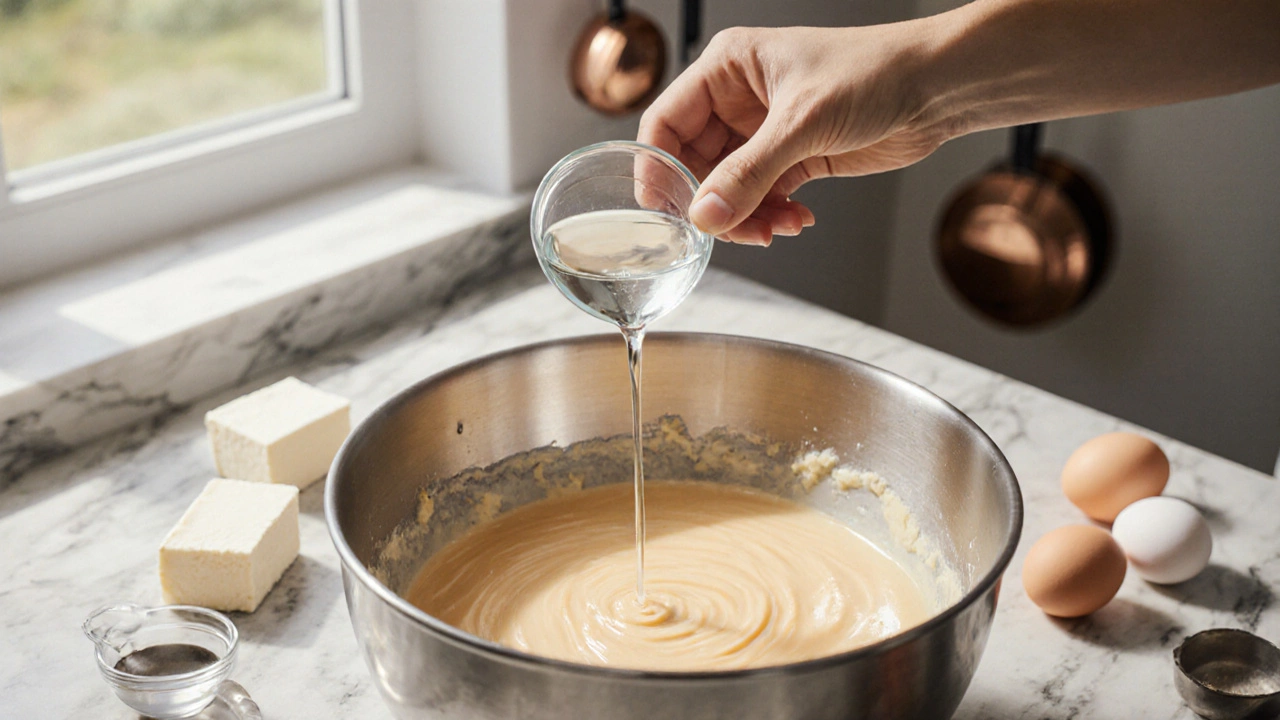Why Add Vinegar to Cheesecake? The Science Behind the Secret Ingredient
Discover why a splash of vinegar is a secret weapon in cheesecake, how much to use, best types, substitutes, and troubleshooting tips for flawless results.
When working with Cheesecake, a creamy dessert built on a crust, cream cheese, eggs, and sometimes a bit of sour cream, either baked or chilled. Also known as cheese cake, it offers a rich, tangy flavor that can be customized in endless ways, the basics matter more than fancy tricks. Adding Sour cream, a tangy dairy product that lightens texture and adds a subtle zip to the filling can keep the batter from becoming too dense. Equally important is the choice of fat: Double cream, a high‑fat dairy that makes the cake silky and luscious creates a smoother bite than standard whipping cream, which can feel a bit thin. Cheesecake baking tips start with these ingredients because they directly shape the final texture and flavor.
Understanding the major styles helps you pick the right approach for any occasion. New York cheesecake, a dense, baked version famous for its buttery crust and velvety filling relies on a higher proportion of cream cheese and often includes a splash of sour cream for tang. In contrast, a Baked cheesecake, any cheesecake set in the oven, whether New York‑style or lighter versions can be adjusted with more eggs or a touch of gelatin to control firmness. The choice between a baked or a no‑bake version influences not only texture but also preparation time and equipment needs. Baked cheesecakes need a water bath to prevent cracks, while no‑bake types rely on chilling to set. Knowing that cheesecake baking tips encompass selecting the right cream, managing oven humidity, and timing the cooling phase lets you avoid common pitfalls like cracks or soggy crusts.
Beyond the core components, the crust, the bake temperature, and the cooling method each deserve their own focus. A classic graham‑cracker crust mixed with melted butter provides a sturdy base; press it firmly and pre‑bake for 10 minutes to lock in shape. When it comes to temperature, most baked cheesecakes thrive at 300°F (150°C) and benefit from a gentle water bath that supplies steady moisture. After baking, the cake should cool gradually in the oven with the door slightly ajar, then refrigerate for at least four hours; this slow cooldown prevents the surface from contracting too fast, which is a prime cause of cracks. Even the type of pan matters—springform pans with removable sides make unmoulding a breeze and protect the delicate edges.
Putting these ideas together, the collection below covers everything from the science of cream selection to real‑world tricks for flawless crusts. You’ll find practical guides on using sour cream for extra lift, choosing between double cream and whipping cream, and mastering the differences between New York, baked, and no‑bake cheesecakes. Whether you’re a beginner who’s never cracked an egg in a cheesecake or an experienced baker looking to refine texture, the posts ahead give step‑by‑step advice you can apply right away. Dive in and start turning your kitchen into a cheesecake workshop.

Discover why a splash of vinegar is a secret weapon in cheesecake, how much to use, best types, substitutes, and troubleshooting tips for flawless results.